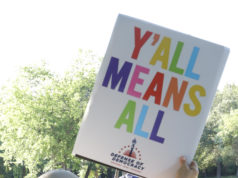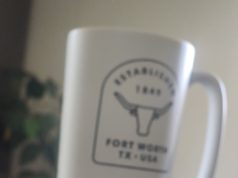Earlier this year, we wrote about why Dallas got a federal TIGER grant for its streetcar plan, but Fort Worth did not, even though both were included in a joint grant proposal. It was very easy to figure out what caused the rejection. Two Trinity River bridge redesigns — for Henderson Street and the Paddock Viaduct (N. Main Street) — were included in the streetcar proposal even though neither bridge had anything to do with the streetcar plan. They were included because Congress has started a moratorium on earmark funding, and that’s the way Trinity River Vision had been funded. So the powers that be (take your pick: Kay Granger, Mike Moncrief, downtown business interests, all of the above) decided to try to siphon off some of the federal funds (a total of $17 million for the bridges) for streetcar line. I’ve been told by very good sources that is why the feds rejected FW’s grant.
Now comes word that any future streetcar lines in Fort Worth may be in trouble. At the last council meeting, members were supposed to approve a contract with HDR Engineering to study the financial feasability, best route locations and environmental studies about how to get a line started. The $1.8 million study was to be funded mostly through the North Central Texas Council of Governments ($1.6 million), and the HDR study would not set anything in stone. HDR would merely present the best options and council could sign on or vote it down. The study would take about a year.
Council decided to delay a vote on the HDR contract until April 6. Proponents of the plan (like council member Joel Burns) didn’t think they had the votes to approve the contract at that meeting. The sticking point? With the earmarks drying up, some city leaders think the $1.6 million in federal NCTCOG money should be shifted from streetcars to clearing up the Tower 55 freight rail line congestion just east of downtown. Do you think BNSF and Union Pacific had anything to do with this behind the scenes maneuvering?
People can debate the merits of modern streetcar systems all they want, but most studies indicate they increase the use of mass transit and contribute a lot to economic development on property near the lines. But for the city to shelve the idea even before they get a study done — paid for with very little city money — is sort of irresponsible. If you think the study should be done with HDR, conatct you council member and show up at the council meeting April 6.












Streetcars are toys for the downtown crowd. They appeal to white people who wouldn’t be caught dead on a bus.
Spend the money on buses. The rest of us will use them.
It’s embarrassing that our mass transit is so lacking, especially considering streetcars were once an integral part of Fort Worth (early 1900s). We’ve fallen into the suburban trap of offering all the drawbacks of a major city – traffic, urban congestion – without the benefits – proximity and ease of transit.
We’re missing an opportunity connect residents and consumers to our strongest assets: the Stockyards, West 7th, and downtown.
Streetcars are viable tools for transportation and sustainable land development. As a honkey who rides the bus, I think that streetcars would be an important addition to FW’s transit mix.
#1 we missed out on the money because Dallas is a BLUE county and Tarrant is a RED county. As the saying goes – To the victors go the spoils.
#2 THE T SUCKS! It is in my humble opinion a impotent and mismanaged government agency that can’t even keep it’s member cities. It takes forever to get anywhere on the T and a lot of the time you have to transfer more than once.
#3 The T bus routes are long and circuitous. They go everywhere and finally after they will get you to your destination, just look at route 4. It would not be so bad if the T offered limited stop routes, but they don’t even do that. They stop at every corner and pick up all us Honkey, poor folk, and other various terms of endearment for poor people.
4. Streetcars offer limited stops and sometimes their own right of way. Just look at the Success of DART’S light rail system. not only that, but they spur commercial and residential development. Buses don’t do that. Buses run on fossil fuels. Light rail runs on electricity. Also street cars carry more people making them more efficient per person than a dirty polluting bus.
If you ask me I say we scrap the T and start all over or at least light a fire under some one’s fat butts! If the can spend money on 2 downtown commuter rail stations (of which only one was really needed) then they can spend the money on this study!
It’s Texas, what a shock. Texas needs to stick with what it knows, strip malls, and cookie cutter sprawl. If you want a nice city, you have to go to one of those Socialist/Commiee towns..
Fort Worth is missing out on these funds because, unlike Dallas, Houston, or Austin, Fort Worth hasn’t proven it can even run a decent bus system, much less streetcars or god-forbid light rail. These funds are going to cities where they are most likely to prove successfull. Fort Worth’s plan just sounds like a cute little thing for tourists to do. I work in downtown Dallas and can get to our smaller Dallas office near SMU, Northpark, my doctor, the bars and restaurants in Uptown, my girls place in Cedars, and back to Fort Worth all by lightrail, train and trolley. An extension of the trolley system into Oak Cliff and Bishop Arts makes sense in Dallas. It’s a pipedream in For t Worth.
Fort Worth needs transportation options. A system of streetcars is serious business and will be used by a large cross-section of the population.
The broader the customer base, the more community support the overall transit systems gets (including the TRE *and* the bus system).
If designed correctly, this starter streetcar system can become the central core for a highly efficient light rail network. And to the few naysayers:
Have you already forgotten the successful Tandy Center subway? Less than a mile long, it carried 4,000 passengers a day.
Allowing this to close was one of the biggest transportation mistakes in the history of Fort Worth.